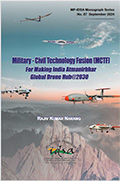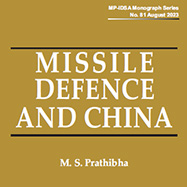Afghans in Need: Positing India’s Continued Engagement With Afghanistan
With the leaders of the Taliban regime making a concerted effort to reach out to India, and India making it clear that it will remain committed to the people of Afghanistan, the ground appears to have been laid for engagement based on a working understanding on mutual “non-interference” and “non-threat”. However, the challenge lies in building trust between the two sides.- Vishal Chandra
- 2024 |
- Monograph
- |













